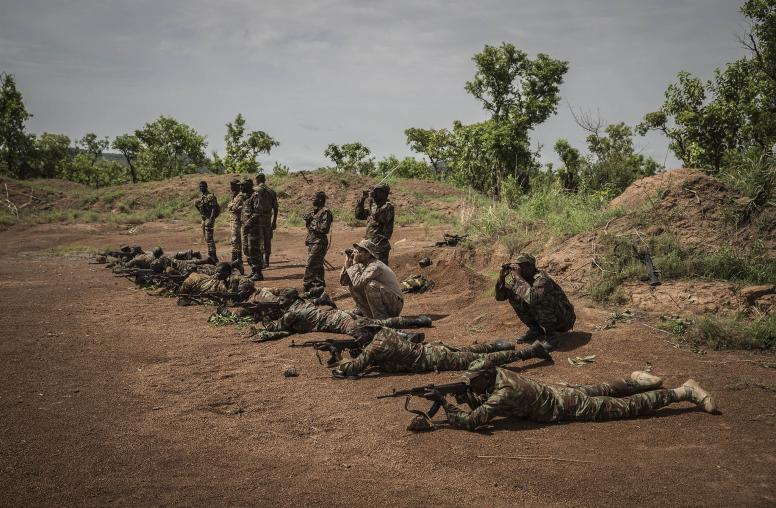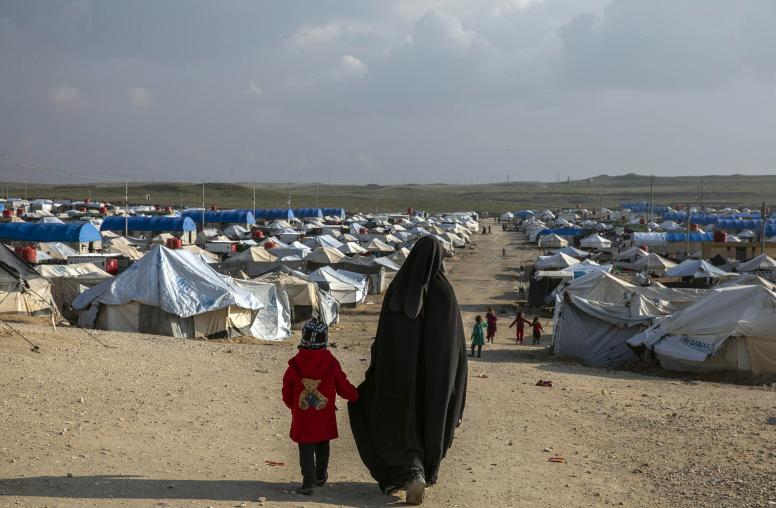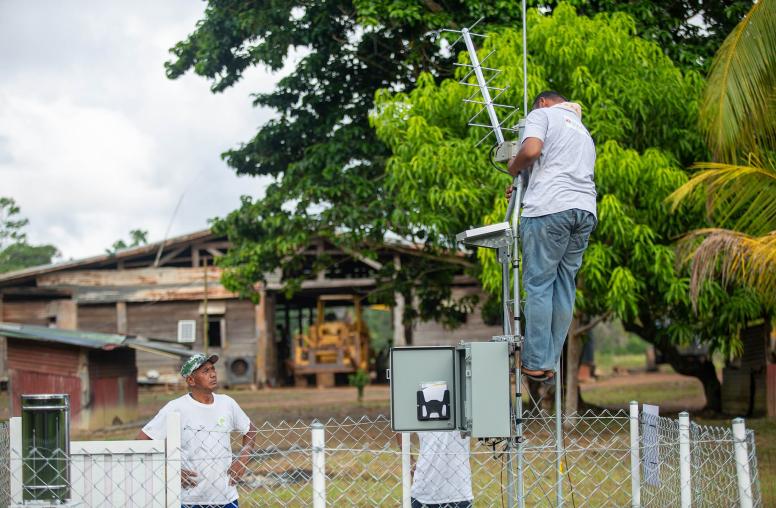As Violent Extremism Evolves, Local Partners are Key in Finding Solutions
Violent extremists often exploit community issues to gain traction. Stopping them will require a similarly localized approach.
In the 22 years since the 9/11 attacks, the global community has grappled with how best to respond to, prevent and address violent extremism and its impacts, including acts of terrorism. Policymakers and practitioners alike have recognized the need to avoid overly repressive measures, so significant investment has gone into a version of preventing and countering violent extremism (P/CVE) that adopts a less-securitized approach alongside an array of peacebuilding, development and public health tools.

While it’s true that incidents have declined in recent years, violent extremism and terrorism continue to evolve and spread, costing thousands of human lives and billions of dollars in estimated damages annually and exacting a significant toll on sociopolitical systems. Just over the past decade, the global community has seen the rise, fall and continuation of the self-proclaimed Islamic State and its affiliates, the transnationalization of once-local violent extremist groups, and the expansion of violent extremist recruitment online.
The global epicenter of violent extremism has also shifted. In years prior, the Middle East and North Africa experienced the highest level of violent extremist activity. Today, the threat is greatest in sub-Saharan Africa.
Violent extremist groups and actors have managed to evolve, in part, through their ability to gain traction in local communities. They are often able to do so by incorporating and responding to community concerns, exploiting grievances and gaps in governance, and manipulating the very policies and programs designed to address violent extremism.
Because of its highly contextualized nature, these local manifestations of violent extremism and their impacts differ from location to location, individual to individual, and community to community. An appropriate response demands greater local insight.
Reinvigorating Localization and “Right-Sizing” the Field
Today, there is a renewed focus on “localization” in U.S. and multilateral foreign policy. In essence, the purpose of localization is to transfer ownership of development and conflict mitigation programs to local actors to improve the responsiveness, efficacy and sustainability of these efforts.
This push aligns with priorities set out in the 2019 U.S. Global Fragility Act, as well as USAID’s recently released localization framework, and recognizes the ongoing need for developing evidence-based best practices to promote peace and security abroad.
Applying localization to P/CVE can reinvigorate and “right-size” our approach to the issue. Just as violent extremists exploit local concerns to gain traction, the scope and size of specific P/CVE strategies should match their unique conflict context.
On an international level, some multilateral counterterrorism commitments have already started to renew their own focus on localization. For example, earlier this year, in the eighth review of its Global Counter-Terrorism Strategy, the United Nations set forth a call for solutions that are “locally initiated, locally championed and locally owned” such that they are more inclusive, sustainable, culturally sensitive and responsive.
However, efforts to localize development, conflict mitigation and related fields are not necessarily new. The current trend represents a revival rather than a completely novel approach, and efforts to implement localization have suffered notable challenges in the past. In particular, implementation can be slow due to the necessity of coordination between multiple bodies and the need to reform systems that have historically operated in a top-down, state-centric approach.
When it comes to localizing P/CVE, definitional issues and external funding pressures and limitations have similarly posed barriers to implementation. These challenges should not dissuade policymakers and practitioners, as localization — when done correctly — is a crucial element to effective P/CVE practice. Rather, renewed efforts to localize P/CVE and broader violence prevention initiatives should draw lessons from these past experiences to improve outcomes.
Considerations for Policy and Practice
As part of a RESOLVE Network initiative, researchers are working to develop a framework for improved coordination across localization, peacebuilding and P/CVE. By drawing on lessons learned from each of the three disciplines, the initiative seeks to provide insights to policymakers and practitioners regarding common pitfalls and missed opportunities. As a first step toward building such a framework, we present some key considerations:
Work With (Not Through) Local Partners
There is broad consensus that P/CVE programs and research should be designed with greater community engagement and contextualization, but evidence suggests that previous efforts to localize P/CVE and peacebuilding initiatives have had mixed success. Localization is not always as straightforward as it may seem: Definitional as well as practical and policy challenges continue to plague these initiatives — including questions as to exactly what and who is “local.”
“Local” conceptualized in terms of geography often overlooks or underappreciates differences in local actors, relationships and power dynamics, presuming a level of homogeneity that does not always exist. This underscores the necessity of localized knowledge and engagement in informing and setting clear policy priorities, which requires significant investment not only in programs, but also in local research to assess and identify local ecosystems, stakeholders, interests, challenges and opportunities.
Such research and engagement should avoid being driven solely by external foreign policy agendas. Doing so risks undermining local knowledge by proscribing problems that may not be seen as the most pressing by those in local communities — or even present in the first place.
Instead of working through local partners to implement externally developed policy priorities, funders should work with local partners, centering their local expertise to appropriately identify issues and support the development of responsive, sustainable solutions at the local level.
In doing so, they should take care to avoid oversimplifying or romanticizing the motivations and “local-ness” of these partners through the lens of the desired outcome, for example by assuming that these partners are disconnected from national or international conflicts on the basis of their local role.
View Localization as a Long-term, Multilateral Investment
Relatedly, the implementation of localization as a policy priority is, in part, driven by availability of funding and still tied to budgetary cycles determined by external factors. As such, there is often a tension between the time horizon of effective, sustainable violence reduction measures at the local level and the financial support of these initiatives. Ongoing problems — including violent extremism — require ongoing funding for sustainable and locally led solutions.
Cost-sharing and coordination can ease some of these growing pains as P/CVE transitions from state-centric, top-down approaches to development and implementation at the local level. Multilateral commitments, such as the Global Counterterrorism Forum, among others, are important to facilitate the exchange of knowledge, continuous learning and coordination between stakeholders at all levels.
Decouple Securitized and Non-securitized Solutions to Local-Level Violence Reduction
Drawing from peacebuilding, development and related violence prevention fields, P/CVE utilizes a wide range of strategies to address and disrupt local factors that facilitate an individual’s mobilization to or engagement in violent activities.
While, in theory, P/CVE is meant to focus on non-securitized solutions, in practice it is often conflated with securitized counterterrorism initiatives (military and law enforcement). Overlapping programs, policies and strategies are not always coordinated with one another, which can lead to blurring, duplication, confusion and the securitization of similar types of programming in local settings, all of which can escalate or worsen existing conflict dynamics.
Indeed, P/CVE activities are often implemented in local contexts experiencing other forms of violence and conflict, at times without a full understanding of how these local level dynamics do — or do not — intersect or, more fundamentally, whether they even involve violent extremism.
Without local insight, these P/CVE activities risk overlooking or mis-categorizing other forms of conflict, which can undermine the field, adversely impact personal freedoms and increase stigmatization in local communities. Funders should be clear on the objectives of P/CVE and the appropriate strategies by which to implement it, recognizing overlaps with other conflict mitigation and security programs in a way that avoids further mission blurring and adverse outcomes.
Where Localization Goes from Here
Localization provides a promising opportunity to reconsider and right-size P/CVE activities, but only if lessons from the past are incorporated into new localized strategies and partnerships. A better framework for policy and practice is needed, one that understands shortcomings in previous efforts; recognizes overlaps and distinctions from other violence prevention portfolios; and can assist in developing and coordinating local-level solutions to the dynamics that lead to and sustain violent extremism as an ongoing global challenge.



